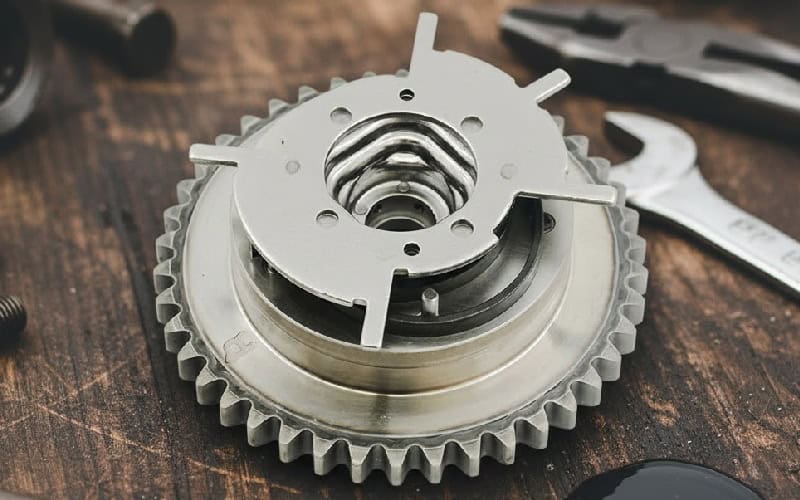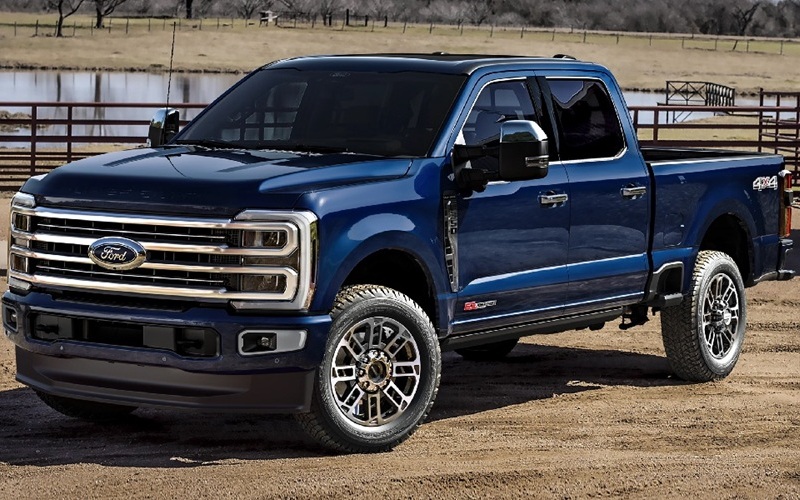The Ford Explorer strikes the perfect balance between rugged capability and sophisticated design, combining cutting-edge technology with precision engineering under the hood. At the heart of many Ford truck engines lies a component that revolutionizes performance and efficiency: the cam phaser. This precision-engineered system optimizes valve timing for ideal combustion, resulting in better power delivery and improved fuel economy.

The Fundamental Role of Cam Phasers
Cam phasers represent a significant advancement in engine technology, serving as the cornerstone of the Ford Variable Cam Timing (VCT) system. These sophisticated components control the precise timing of valve operations by adjusting the position of the camshaft in relation to the crankshaft. By altering this relationship, Ford trucks achieve optimal air-fuel mixture combustion across various driving conditions.
The base function of a cam phaser is straightforward yet ingenious: it allows the engine to vary valve timing rather than maintaining fixed positions. This dynamic adjustment ensures your Ford truck delivers impressive performance when needed and excellent fuel efficiency during regular driving.
How the Cam Phaser System Functions
Under the hood, the cam phaser works in conjunction with the Engine Control Unit (ECU) to continuously optimize performance. The system uses oil pressure controlled by specialized solenoids to adjust camshaft timing with remarkable precision.
When you start your Ford truck, the PCM (Powertrain Control Module) analyzes input from various engine sensors, including temperature, throttle position, and engine load. Based on these readings, it determines the ideal valve timing for current conditions. The PCM then sends signals to the VCT solenoid, which regulates oil flow to the cam phaser unit.
The phaser itself consists of several key components:
1. A stator connected to the timing chain
2. A rotor connected to the camshaft
3. Internal chambers separated by vanes
4. A locking pin mechanism for cold starts
Oil pressure fills specific chambers within the phaser, creating rotational force that advances or retards the camshaft timing. This seamless adjustment occurs within milliseconds, enabling optimal performance across the entire RPM range.
Benefits of Cam Phaser Technology in Ford Trucks
The implementation of cam phasers in Ford trucks provides substantial advantages that enhance both performance and efficiency. With seating for up to seven passengers in models like the Explorer, Ford ensures that everyone enjoys a smooth, responsive ride thanks to this advanced technology.
At lower RPMs, the system retards valve timing to improve fuel economy and reduce emissions. This translates to better everyday driving efficiency and extended range between fill-ups. When more power is demanded, the system advances timing to maximize engine output, delivering impressive performance when towing or accelerating.
The Ford 3.5-litre EcoBoost® engine benefits tremendously from this technology, providing a perfect blend of efficiency and power. The variable timing enables smooth operation across a broader power band, eliminating the compromise between low-end torque and high-end horsepower that plagued older fixed-timing engines.
Common Cam Phaser Issues and Maintenance
While the cam phaser system represents impressive engineering, it requires proper maintenance to ensure reliable operation. Regular oil changes with manufacturer-recommended oil specifications are crucial, as the entire system relies on clean, properly pressurized oil to function.
Ford has continuously refined the cam phaser design across different model years. The latest generation components feature improved durability and response, addressing concerns from earlier versions. Maintaining proper oil levels and quality significantly extends the lifespan of these critical components.
For those experiencing rough idle or unusual engine noises, particularly a distinct rattle upon cold start, the cam phaser system might require inspection. The specialized VCT solenoid screens can become clogged with debris, restricting oil flow and hampering proper operation. Dedicated Ford service technicians have the expertise to diagnose and resolve these concerns efficiently.
The Evolution of Cam Phaser Technology
The Ford commitment to innovation extends to continuous refinement of cam phaser technology. Early implementations appeared in the 2004 model year, with significant advancements in subsequent generations. The latest designs demonstrate remarkable improvements in durability and performance.
Modern Ford trucks utilize sophisticated dual-phaser systems that independently control both intake and exhaust camshafts. This advanced configuration provides unprecedented control over engine breathing, optimizing performance across a wider range of driving conditions.
All-wheel drive models, in particular, benefit from this technology, as the system adapts to varying load conditions when navigating different terrains. Whether tackling urban streets or exploring scenic routes, the cam phaser system ensures your Ford truck delivers confidence-inspiring performance.
The Future of Cam Phaser Technology
Ford continues to refine cam phaser designs with each model year, introducing more durable components and enhanced control algorithms. The latest systems integrate seamlessly with other engine technologies like direct injection and turbocharging to further optimize performance and efficiency.
The future points toward even more precise control, with potential implementation of continuously variable systems rather than the current stepped adjustment capabilities. This evolution promises to further enhance the driving experience while reducing fuel consumption and emissions.
Whether navigating urban environments or tackling challenging terrain, Ford trucks equipped with cam phaser technology deliver the versatile performance modern drivers demand. The system exemplifies a commitment to innovation, combining sophisticated engineering with practical benefits for everyday driving.
Five Cam Phaser Facts
1. The cam phaser can rotate the camshaft up to 60 degrees relative to the crankshaft, allowing for dramatic changes in engine characteristics with no driver input required.
2. Ford technology shares conceptual similarities with BMW’s VANOS system, though Ford implementation uses a different mechanical approach with unique locking pin mechanisms.
3. A Ford truck with functioning cam phasers can achieve up to 20% better fuel economy compared to similar fixed-timing engines while simultaneously producing more power.
4. The first prototype cam phasers were purely mechanical, but modern versions incorporate sophisticated electronic controls that make adjustments 100 times per second.
5. Ford engineers specifically designed their cam phaser system to prevent valve-to-piston contact even during failure conditions, unlike some competitor systems that risk catastrophic engine damage.
Questions and Answers About Cam Phasers
How do I know if my Ford truck has cam phasers?
- Most trucks manufactured after 2004 with overhead cam engines utilize this technology. This includes popular models with the 4.6L, 5.4L Triton, and the EcoBoost engine family. Your vehicle’s maintenance manual will specify if your engine employs Variable Cam Timing technology.
What symptoms indicate cam phaser problems?
- The most common indicators include a rattling noise during cold starts, rough idle, decreased power, reduced fuel economy, and, in some cases, check engine lights related to camshaft position sensor readings. The noise typically diminishes once the engine warms up as oil pressure increases.
How often should cam phasers be serviced?
- They don’t require specific service intervals but depend on proper engine oil maintenance. Following the recommended oil change schedule with the correct viscosity oil is crucial. Most issues arise from oil-related problems, so maintaining clean oil at proper levels prevents most concerns.
Can cam phasers be disabled or locked out?
- While aftermarket solutions exist to lock them in a fixed position, this modification eliminates the performance and efficiency benefits of the VCT system. Additionally, such modifications typically require reprogramming of the ECU and may affect emissions compliance.
Do all engines with variable valve timing use cam phasers?
- No, different manufacturers employ various mechanisms to achieve variable valve timing. The Ford system uses this technology, while some competitors use alternative technologies like the Honda VTEC, which alters valve lift rather than just timing. The Ford approach offers an excellent balance of performance, efficiency, and reliability.
Disclaimer: Content contained in this post is for informational purposes only and may include features and options from US or international models. Please contact the dealership for more information or to confirm vehicle, feature availability.





